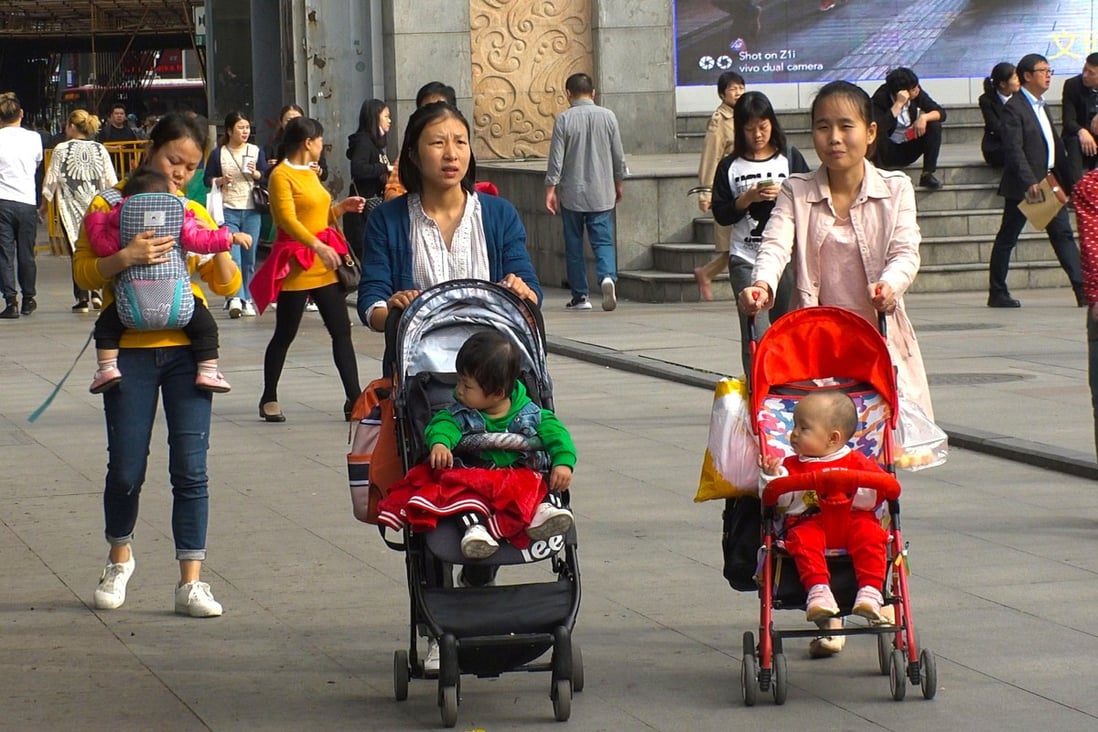China population: 2021 birth data to offer fresh insight into demographic crisis
- Annual data will show whether China’s number of births and birth rate hit record lows in 2021, and will give breakdowns in terms of age, gender and residence
- Demographic figures from the National Bureau of Statistics also factor into the national economic performance report due on Monday
When China unveils its 2021 birth totals on Monday, the revelation will cast the spotlight on the impact of the three-child policy in its debut year – a year that featured widespread and high-level discussions over how the nation must address its worsening demographic crisis.
The National Bureau of Statistics (NBS) is also expected to release 2021’s year-end population, annual birth rate and breakdowns in terms of age, gender and residence, according to the official schedule and conventional practices.
The demographic figures will factor into 2021’s national economic performance report that should also come out on Monday. That report will give China’s economic growth rate in 2021.
Annual data will also show whether the country’s number of births and birth rate hit record lows in 2021, shedding fresh light on how soon
.
That would offer a long-awaited official gauge of the country’s current demographic status following the
results that were revealed in May. Those results showed that births in 2020 drop sharply to 12 million – down from 14.65 million in 2019, and the lowest point in a nearly six decades.
Beijing responded by further loosening its controversial birth restrictions, allowing couples to have
.
Experts have warned that the country could hit its demographic breaking point more quickly than previously expected, resulting in a dwindling labour force, a strained pension system, and a rethink of Beijing’s inward-facing consumption strategy known as
.
“We estimated that the number of national births in 2021 will drop by 13-20 per cent from 2020 – the number will be between 9.5 million and 10.5 million,” said YuWa Population Research, a think tank established by some of the nation’s leading advocates for lifting birth restrictions, in a report published last month.
“If the number of newborns is close to the lower limit of the forecast, the total population is bound to enter a negative growth,” the report added. That would indicate there are more people leaving the population than joining it.
According to the official China Statistical Yearbook released last month, 2020’s birth rate fell to a record low 8.52 births per 1,000 people.
The country recorded a fertility rate of just 1.3 children per woman in 2020, below the rate of 2.1 is needed to maintain a stable population. China’s rate was lower than the 1.34 of Japan, the world’s third-largest economy, which has struggled with an ageing and shrinking population for decades.
Singapore had an even lower rate of 1.1. The city state has been trying to boost its birth rate by granting S$8,000 in cash gifts to couples having their first or second child, and S$10,000 for each additional child.
After China’s census, many local-level authorities across the country stepped up their efforts to encourage more births, including by offering subsidies, lending money and granting longer parental leaves to those who have a second or third child.
One county is essentially playing Cupid by
via an official database for matchmaking purposes.
Other responses have sparked controversial and online censorship. Last week, a prominent economist called on China’s central bank to
to encourage births. Weibo, China’s version of Twitter, then
from posting, saying he had “violated relevant laws and regulations”.
Some local government statistics have already given sporadic insight into the population figures for last year, though China does not release national population data on a quarterly or half-yearly basis.
Authorities in Anhui province, one of China’s major sources of migrant workers, declared that
, and they were expecting a year-on-year drop of 17.8 per cent in 2021 in an official document from September.
Henan, the country’s third-most-populous province, showed an 18.8 per cent decline in the number of newborns during the first nine months of last year, according to the official statistics pertaining to disease screenings among newborns.
Guiyang city, capital of Guizhou province, registered 41,908 births among permanent residents in the first 11 months of 2021, down 13.3 per cent from a year prior. China conducts its national census every 10 years. Five years after every census, 1 per cent of the population is sampled. And in other years, just 0.1 per cent of the population is sampled, according to authorities.
Last January, however, the bureau did not publish the annual demographic numbers. Instead, they were released along with the census results in May.
Source:
Non paywall:

